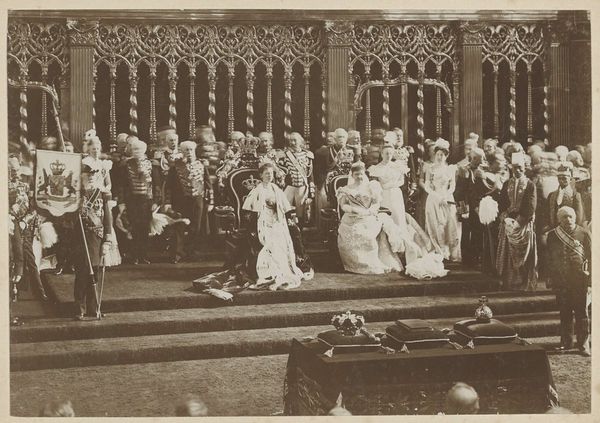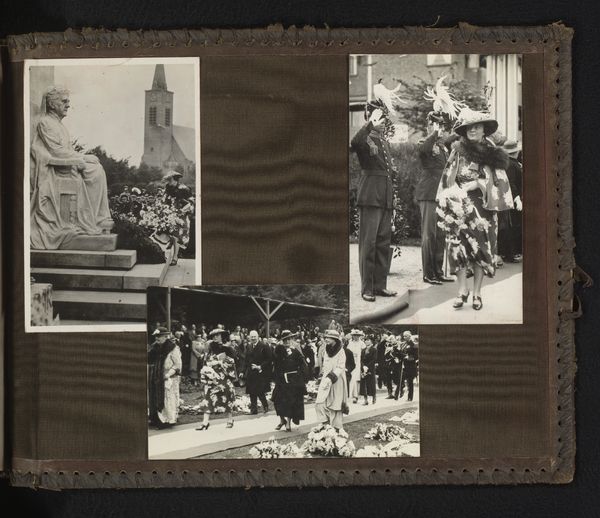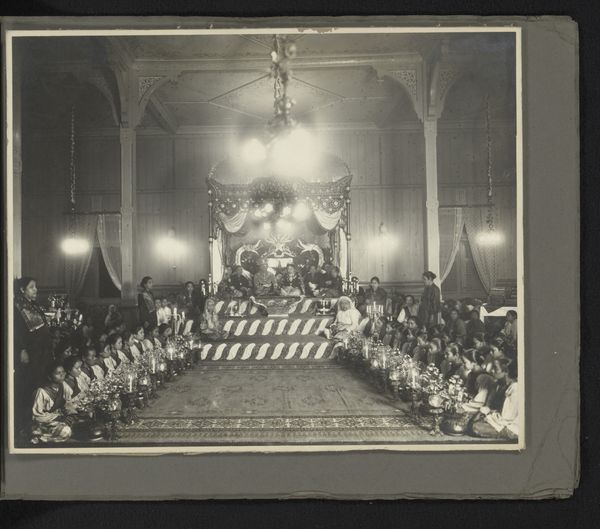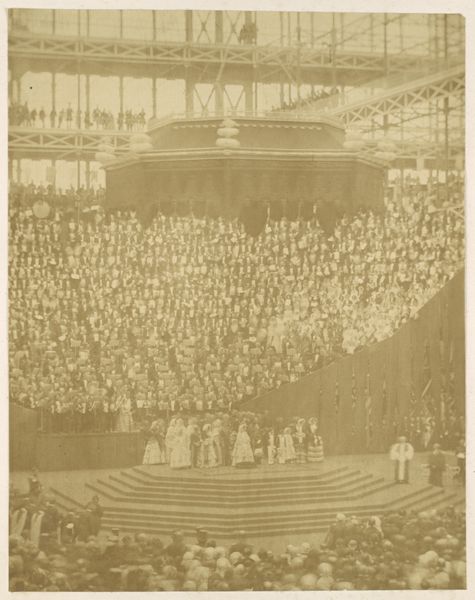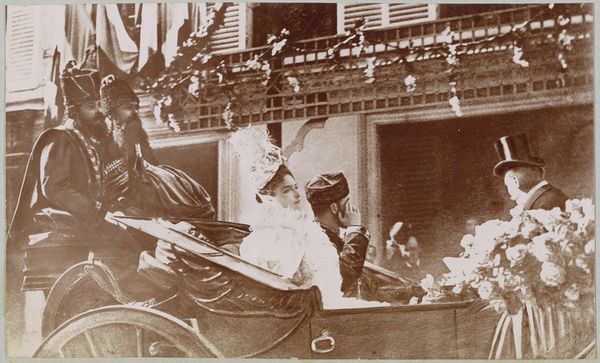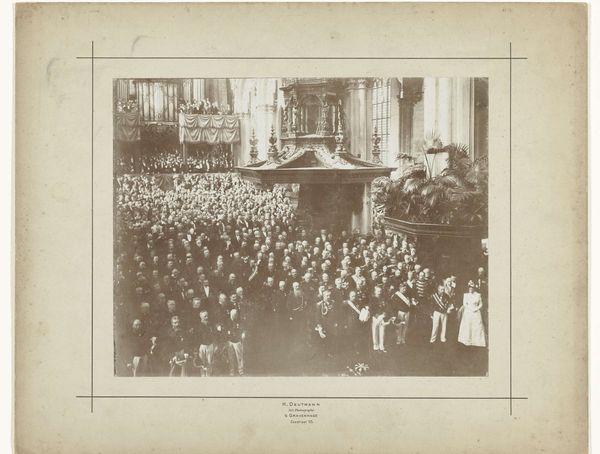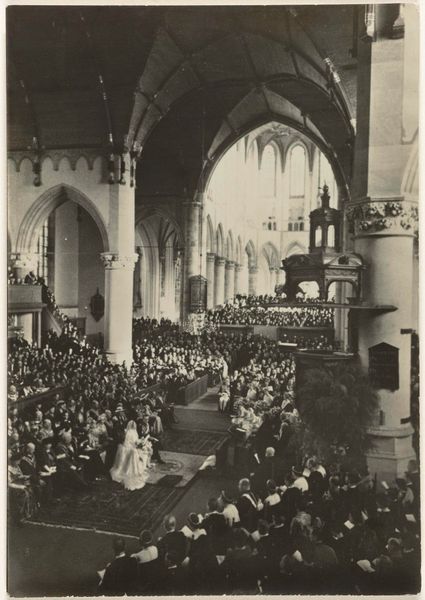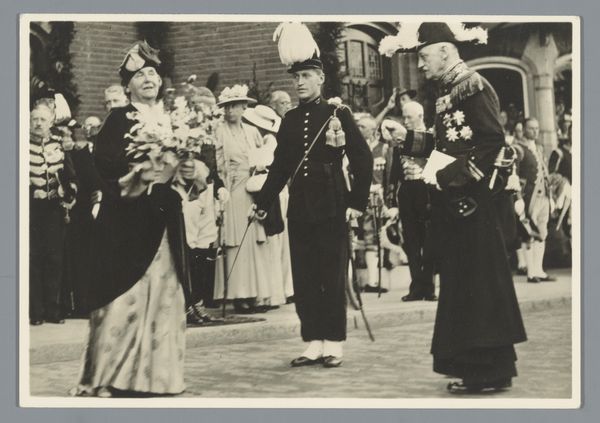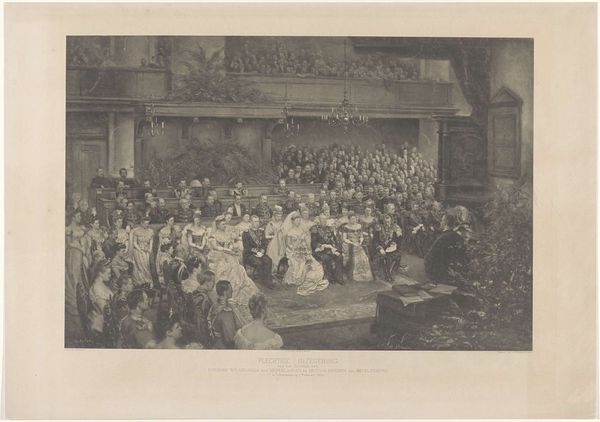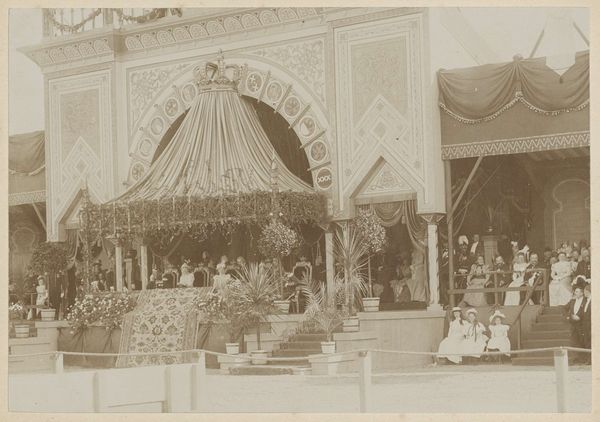
Inhuldigingsplechtigheid van Wilhelmina in de Nieuwe Kerk te Amsterdam Possibly 1898 - 1899
0:00
0:00
gelatin-silver-print, print, photography, gelatin-silver-print
#
print photography
#
gelatin-silver-print
# print
#
photography
#
group-portraits
#
gelatin-silver-print
Dimensions: height 226 mm, width 290 mm
Copyright: Rijks Museum: Open Domain
Curator: This gelatin silver print by Barend Groote, likely created between 1898 and 1899, captures the inauguration ceremony of Queen Wilhelmina in the Nieuwe Kerk in Amsterdam. What's your initial take? Editor: The immediate impression is the sheer density of people and ornamentation. It’s almost claustrophobic, isn’t it? All that lace, all those uniforms. Curator: Absolutely, it’s a powerful statement about the weight of the monarchy. Think about the symbolic value of assembling this many dignitaries, representatives of different institutions. It solidifies the queen’s power through visual representation. Editor: And it's all rendered through photography – a relatively new medium at the time, making it both an official document and a cutting-edge representation. I wonder about the printing process itself. A gelatin silver print is quite delicate; handling and preservation would have been key. It speaks of careful labour and investment. Curator: Good point. And in that period, photography was gaining recognition as a valid art form. Presenting it in gelatin silver is almost an implicit claim to fine art status amidst the pomp. Editor: Precisely. The light and shadow highlight the textures beautifully—the velvet cushions, the gold braid. Each of those details represents the material resources funneled into maintaining the royal image and ceremony. Consider the labor in producing those items! Curator: It does create an interesting tension—a staged realism attempting to freeze a specific narrative in time. What aspects do you find the most striking, in terms of composition? Editor: The foreground seems somewhat staged, doesn’t it? Deliberately framing and guiding the viewer’s gaze. And there’s the almost overwhelming use of visual markers of status, each manufactured. It speaks to a controlled consumption, a performance. Curator: Agreed. Groote is using photography not only to document an event, but to reinforce a national identity. And in terms of reception, this image would have circulated widely, shaping public perception of the monarchy. Editor: Which makes you think of how we consume and critique photographs even today, doesn't it? From coronation images to our constant stream of personal digital photos, we’re always negotiating ideas of authenticity and representation. Curator: Absolutely, and considering how such "realist" portrayals shape and even reinforce our collective understanding of power. Editor: Food for thought, especially thinking of material traces and continuous circulation of this photography.
Comments
No comments
Be the first to comment and join the conversation on the ultimate creative platform.

